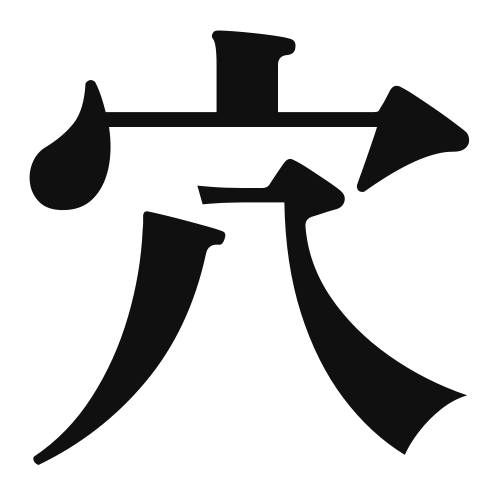1. Overview of Meaning
The kanji “穴” (pronounced “ana”) means “hole” or “cave.” It refers to an opening or hollow space in a solid object or surface.
2. Formation and Radical
Formation of the Kanji: The kanji “穴” is a pictogram that represents a hole or an opening. It visually resembles a cave or a hollow space.
Radical: The radical for “穴” is “穴” itself, which is used in other kanji related to holes or cavities.
3. Examples of Usage
Common Words and Phrases: Some common words that include “穴” are:
- 穴場 (anaba) – a hidden spot or a secret place
- 穴埋め (anaume) – filling a hole or gap
Example Sentences in Daily Conversation:
- この公園には大きな穴があります。 (Kono kōen ni wa ōkina ana ga arimasu.) – There is a big hole in this park.
- 彼は穴を掘っている。 (Kare wa ana o hotte iru.) – He is digging a hole.
4. Synonyms and Antonyms
Similar Kanji: A similar kanji is “孔” (kō), which also means “hole” but is often used in a more specific context, such as “孔子” (Kōshi) referring to Confucius, or “孔雀” (kujaku) meaning peacock, where it refers to the holes in the feathers.
Antonyms: An antonym for “穴” could be “塊” (karai), meaning “mass” or “lump,” which refers to a solid object without openings.
5. Cultural and Historical Background
Relation to Japanese Culture: In Japanese culture, “穴” can symbolize hidden opportunities or secrets, often used in literature and folklore.
Proverbs and Idioms: One common idiom is “穴があったら入りたい” (ana ga attara hairitai), which translates to “I wish I could hide in a hole,” expressing a desire to escape from an embarrassing situation.
